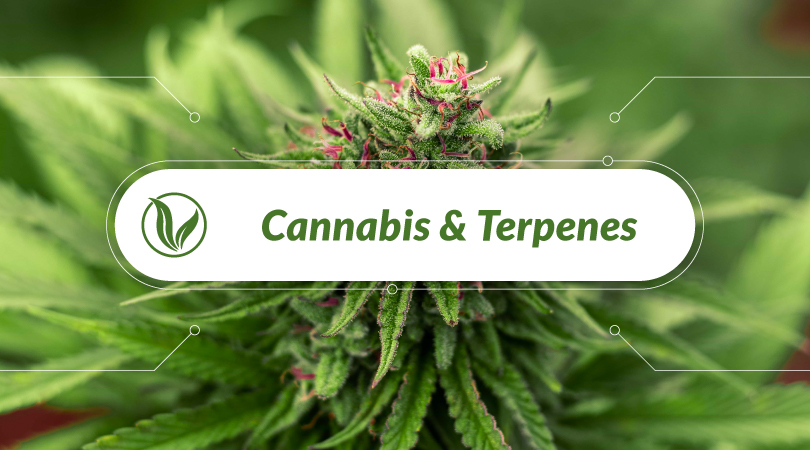
Your Guide to Understanding Terpenes & Their Role in Cannabis
Cannabis-derived products are recognized for many things, one of which is their distinct smell. As more research is performed, there’s a better understanding of the different compounds that give the hemp plant its distinguishing characteristics. One of the less discussed, but just as important, compounds is terpenes.
Terpenes are aromatic compounds that determine the scent of many flowers and herbs, including marijuana and hemp-derived products. But aside from the smell that we all associate with these products, terpenes play a major role in a plant’s growth, protection, and survival.
So, what exactly are terpenes and why should we care? Let’s take a look at the importance of terpenes in the plant world and how they could affect your favorite hemp-derived products.
What Are Terpenes?
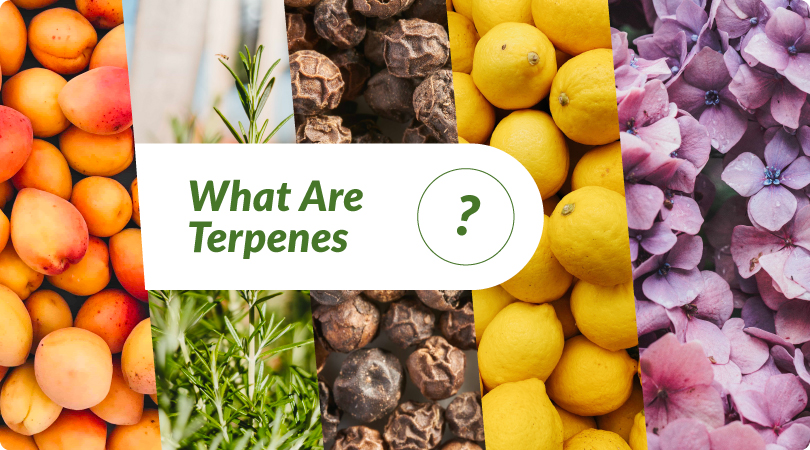
As mentioned, terpenes are aromatic compounds found in many plants. When isolated, they become a great source of scent for everyday products such as perfumes and lotions.
Though active in many different plant species, terpenes are often associated with the hemp plant because of its unique smell. And due to the close relationship between taste and smell, terpenes can also help give plants a particular taste.
This 2020 study further explains terpenes:
Terpenes are the primary constituents of essential oils and are responsible for the aroma characteristics of cannabis… Hundreds of terpenes are identified that allude to cannabis sensory attributes, contributing largely to the consumer’s experiences and market price. They also enhance many therapeutic benefits, especially as aromatherapy.
These naturally occurring compounds are also thought to protect the plant. A recent study that focuses on the biochemistry of terpenes, explains that terpenes show potential as antimicrobial, insecticidal, and weed control agents. In other words, they attract pollinators and repel predators, contributing to the plant’s survival.
Types of Terpenes in the Hemp Plant
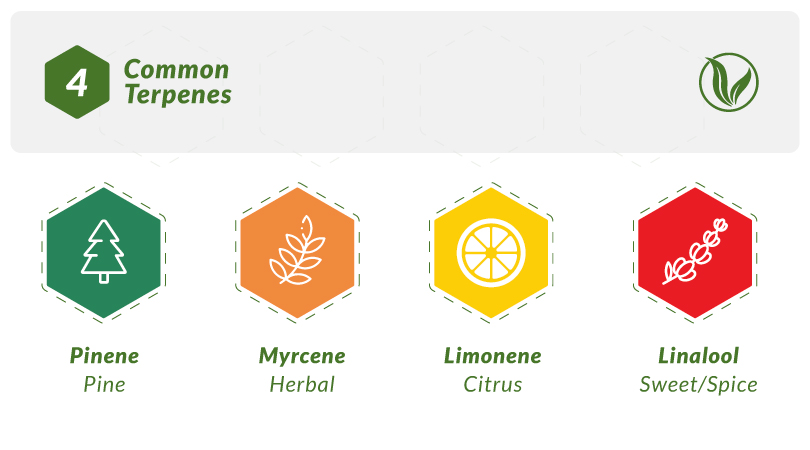
With over 200 different types of terpenes in the hemp plant, it’s no wonder why there’s an abundance of variation in hemp-derived products.
While each terpene plays a role in the final product, we’re going to give a quick introduction to 4 of the most important terpenes that you should know about: Myrcene, Limonene, Linalool, Pinene.
Myrcene
Myrcene is the most abundant terpene in cannabis and also acts as a popular flavoring and aroma agent in many products. Its aroma is often compared to that of cloves, with an earthy, spicy, and slightly bitter flavor profile. It also has a fruity kick that can be compared to red grapes and balsamic.
A 2021 study identifies its beneficial biological properties, which include anxiolytic, antioxidant, anti-aging, anti-inflammatory, and analgesic properties.
Limonene
Limonene is the second-most abundant terpene in all cannabis strains, but not all strains have it. As the name suggests, it gives off a citrusy smell and is considered by some to be the most pronounced terpene.
This terpene is also associated with overall wellness. This description provided by a previous study gives us an insight into its health benefits: “The therapeutic effects of limonene have been extensively studied, proving anti-inflammatory, antioxidant, antinociceptive, anticancer, antidiabetic, antihyperalgesic, antiviral, and gastroprotective effects, among other beneficial effects in health.”
Linalool
Linalool terpenes are known for giving off the popular aroma of lavender with a hint of spice. And while it’s found in many well-known products, it’s often recognized as being one of the more commonly known terpenes in hemp.
The sweet, spicy, and earthy smells are also matched with relaxing properties. Among the many benefits, a previous study points out its anticancer, antimicrobial, neuroprotective, anxiolytic, antidepressant, and anti-stress properties, among others.
Alpha-pinene and Beta-pinene
Alpha-pinene and Beta-pinene are two variations of pinene but differ in their base molecule’s particular class of chemicals. The notable difference between them is that alpha-pinene is slightly water-soluble, whereas beta-pinene is not soluble in water. Yet, they are commonly grouped together because they have more similarities than differences.
These terpenes are characterized by their pine smell and, like the others, also offer many benefits. According to a 2019 study, “A wide range of pharmacological activities have been reported, including antibiotic resistance modulation, anticoagulant, antitumor, antimicrobial, antimalarial, antioxidant, anti-inflammatory, anti-Leishmania, and analgesic effects.”
Benefits of Terpenes
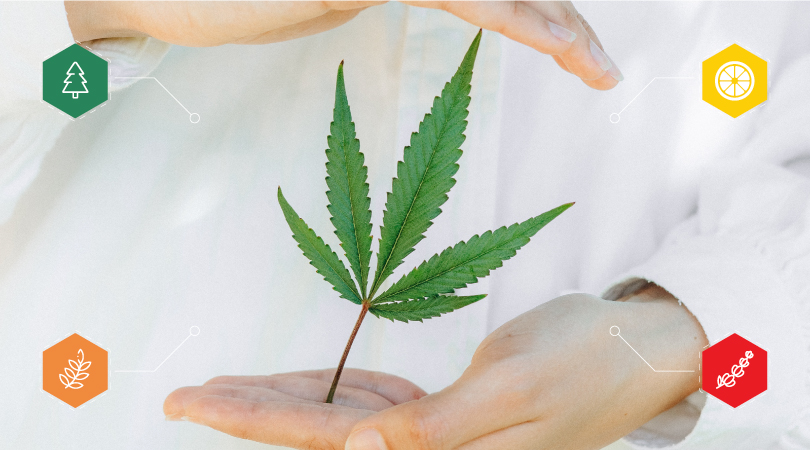
Aromatherapy and relaxation
Aromatherapy works via aroma, so it should come as no surprise that terpenes are often used in this practice. As we discovered in the previous section, different strains offer unique aromas and benefits. A person should choose a terpene or essential oil depending on what their specific needs and goals are.
For instance, our CBD salve for relaxation contains lavender and peppermint to enhance its effects. While terpenes can be found in many presentations, essential oils and creams are typically used in relation to relaxation.
The citric strains which contain Limonene are connected to an enhanced mood, while the lavender in Linalool is famously used to improve relaxation. While they can be found in many presentations, essential oils are typically used in relation to relaxation.
Medicinal properties
When discussing the popular strains of terpenes, we also briefly mentioned the health benefits that they offer. As every strain is different, there is a range of benefits that can be brought to light. Some of the common benefits found in popular strains include being antibacterial, antifungal, anti-inflammatory, anti-cancer, anti-diabetic, antiviral, and antidepressant.
In regards to cannabis, this study states that cannabis is one of the most common sources of medicinal terpenes, containing “many medicinal properties like anticancer, antimicrobial, antifungal, antiviral, antihyperglycemic, analgesic, anti-inflammatory, and antiparasitic.”
Anti-inflammatory properties
The anti-inflammatory properties of many terpenes make them a great addition to a wellness routine. This study, titled Therapeutic Applications of Terpenes on Inflammatory Diseases, backs this claim by saying:
These molecules present attractive biological properties such as analgesic and anticonvulsant activities. Furthermore, several studies have demonstrated that certain terpenes could reduce inflammation symptoms by decreasing the release of pro-inflammatory cytokines for example, the nuclear transcription factor-kappa B, interleukin 1, and the tumor necrosis factor-alpha.
By reducing inflammation, terpenes can also help individuals manage many conditions related to it, improving their quality of life as a result.
Antibacterial properties
Studies have shown that several terpenes have antibacterial properties, with some of the more popular strains including limonene, thymol, eugenol, carveol, and terpineol. This study outlines the specific benefits that some terpenes can offer:
Eugenol exhibited rapid bactericidal action against Salmonella enterica serovar Typhimurium (2 h). Terpineol showed excellent bactericidal activity against S. aureus strains. Carveol, citronellol and geraniol presented a rapid bactericidal effect against E. coli.
Terpenes and Cannabis
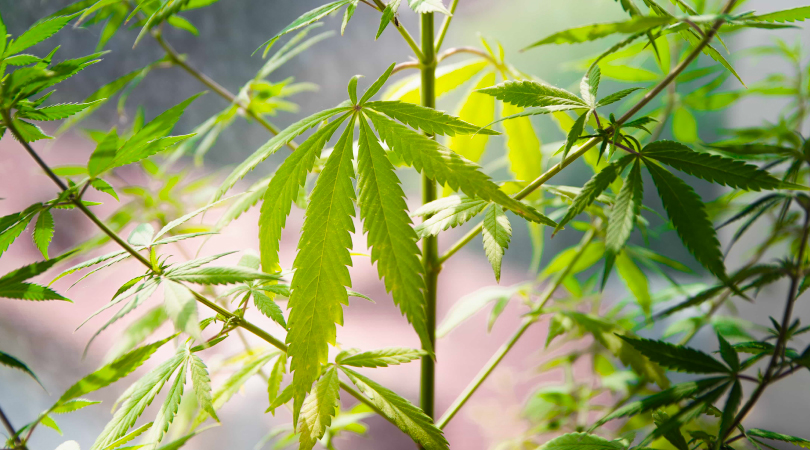
And we can’t talk about terpenes without discussing their exact role in cannabis. After all, many people only recently learned about terpenes due to the booming cannabis industry.
As we know by now, terpenes give cannabis the distinct smell that it’s known for. And for those who have already dove into the world of hemp-derived products, you know that not all products are made the same.
While there are many characteristics and factors that can affect the final product, terpenes are one of them. The combination of terpenes gives each product a signature scent profile, giving the consumer a range of different scents and flavors to choose from.
A common misunderstanding regarding terpenes and cannabis is that terpenes make the consumer high. Terpenes are generally not considered psychoactive, as they alone will not have this effect. However, the confusion arises due to terpenes’ ability to increase the effects.
The type of terpene in your product can have a huge impact on your experience. It determines how long and intense the high is, and even whether it relaxes you or gives you a boost of energy. In fact, some cannabis experts claim that you could benefit from choosing a product based on its terpenes rather than its THC content.
They’re also quite important in regards to a consumer’s experience because of how they interact with other compounds. This leads us to the famous entourage effect.
The Entourage Effect
The entourage effect is the idea that individual compounds in cannabis act differently when combined. Basically, these compounds create a reaction that’s greater than they would have individually.
The holistic effect that’s created is mainly due to three compounds: terpenes, cannabinoids, and flavonoids.
Cannabis Components
| Flavonoids | Give cannabis plants their pigmentation |
| Terpenes | Give cannabis plants their aroma and flavor |
| Cannabinoids | Activate specific receptors throughout the body to produce pharmacological effects |
As explained in a 2020 study, the entourage effect “is the suggested positive contribution derived from the addition of terpenes to cannabinoids.”
The takeaway is that terpenes interact with other parts of the cannabis plant to offer the consumer a well-rounded experience. As mentioned, a consumer should carefully select the right cannabis-derived terpenes before selecting a product, as it can have a substantial effect on their experience.
Conclusion
Terpenes can be found in a range of plants, but many people are just now learning about them due to their importance in cannabis.
Their benefits, which include aromatherapy and relaxation, medicinal properties, anti-inflammatory properties, and antibacterial properties, also contribute to their popularity and can be used in many everyday products.
Acting as a source of aroma, terpenes play a role in the consumer’s overall experience with hemp-derived products, even interacting with other compounds to change the user’s experience. Anyone interested in enjoying the benefits of terpenes should consider what strain different hemp-related products contain in order to create the ideal user experience.
References
An, Q., Ren, J., Li, X., Fan, G., Qu, S., Song, Y., Li, Y., & Pan, S. (2021). Recent updates on bioactive properties of linalool. Food & Function, 12(21), 10370–10389. https://doi.org/10.1039/d1fo02120f
Cox-Georgian, D., Ramadoss, N., Dona, C., & Basu, C. (2019). Therapeutic and Medicinal Uses of Terpenes. Springer EBooks, 333–359. https://doi.org/10.1007/978-3-030-31269-5_15
Del Prado-Audelo, M. L., Cortés, H., Caballero-Florán, I. H., González-Torres, M., Escutia-Guadarrama, L., Bernal-Chávez, S. A., Giraldo-Gomez, D. M., Magaña, J. J., & Leyva-Gómez, G. (2021). Therapeutic Applications of Terpenes on Inflammatory Diseases. Frontiers in Pharmacology, 12. https://doi.org/10.3389/fphar.2021.704197
Ferber, S. G., Namdar, D., Hen-Shoval, D., Eger, G., Koltai, H., Shoval, G., Shbiro, L., & Weller, A. (2020). The “Entourage Effect”: Terpenes Coupled with Cannabinoids for the Treatment of Mood Disorders and Anxiety Disorders. Current Neuropharmacology, 18(2), 87–96. https://doi.org/10.2174/1570159×17666190903103923
Guimarães, A. L. S., Meireles, L. M., Lemos, M. F., Guimarães, M. A., Endringer, D. C., Fronza, M., & Scherer, R. (2019b). Antibacterial Activity of Terpenes and Terpenoids Present in Essential Oils. Molecules, 24(13), 2471. https://doi.org/10.3390/molecules24132471
Ninkuu, V., Zhang, L., Yan, J., Zhenchao, F., Yang, T., & Zeng, H. (2021). Biochemistry of Terpenes and Recent Advances in Plant Protection. International Journal of Molecular Sciences, 22(11), 5710. https://doi.org/10.3390/ijms22115710
Sommano, S. R., Chittasupho, C., Ruksiriwanich, W., & Jantrawut, P. (2020b). The Cannabis Terpenes. Molecules, 25(24), 5792. https://doi.org/10.3390/molecules25245792
Surendran, S., Qassadi, F., Surendran, G., Lilley, D., & Heinrich, M. (2021). Myrcene—What Are the Potential Health Benefits of This Flavouring and Aroma Agent? Frontiers in Nutrition, 8. https://doi.org/10.3389/fnut.2021.699666
Vieira, A. J., Beserra, F. P., Souza, M. H., Totti, B., & Rozza, A. L. (2018). Limonene: Aroma of innovation in health and disease. Chemico-Biological Interactions, 283, 97–106. https://doi.org/10.1016/j.cbi.2018.02.007
